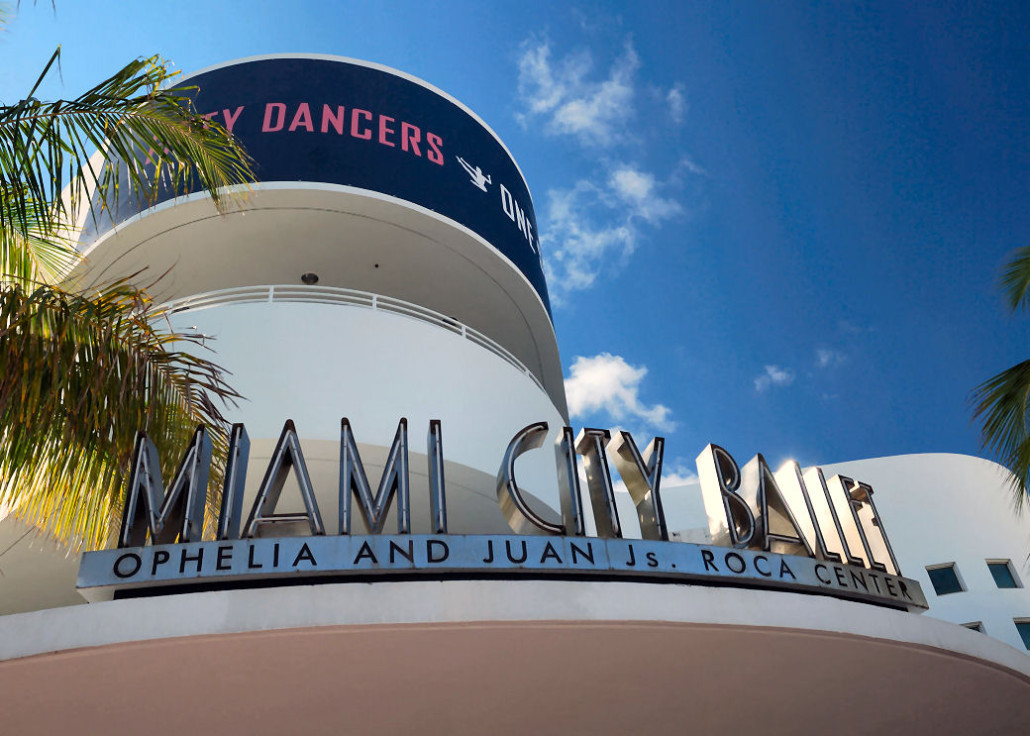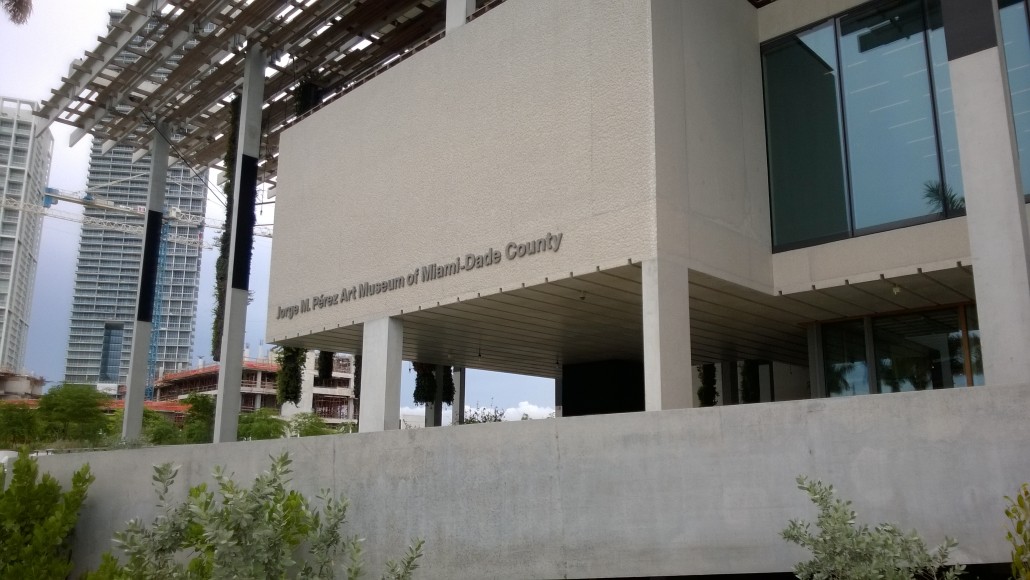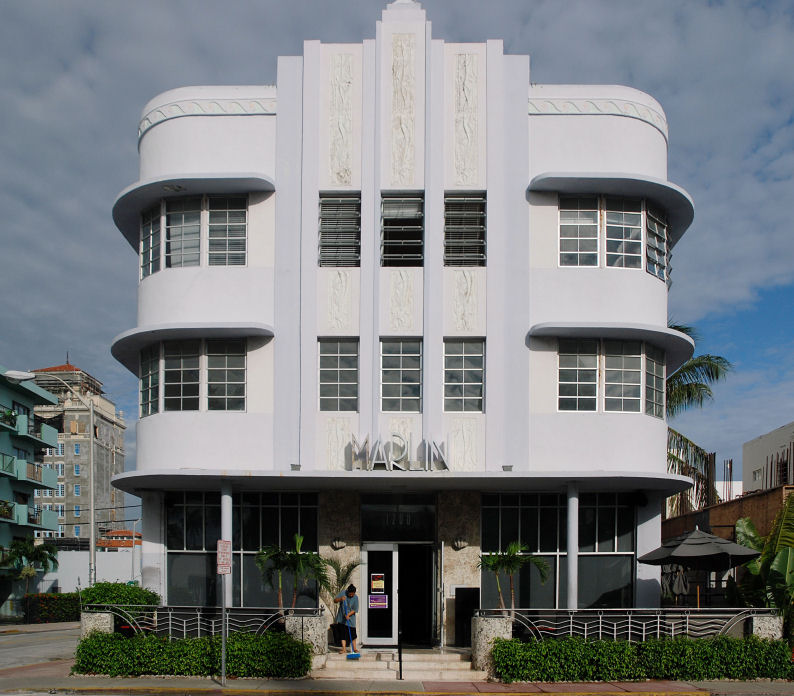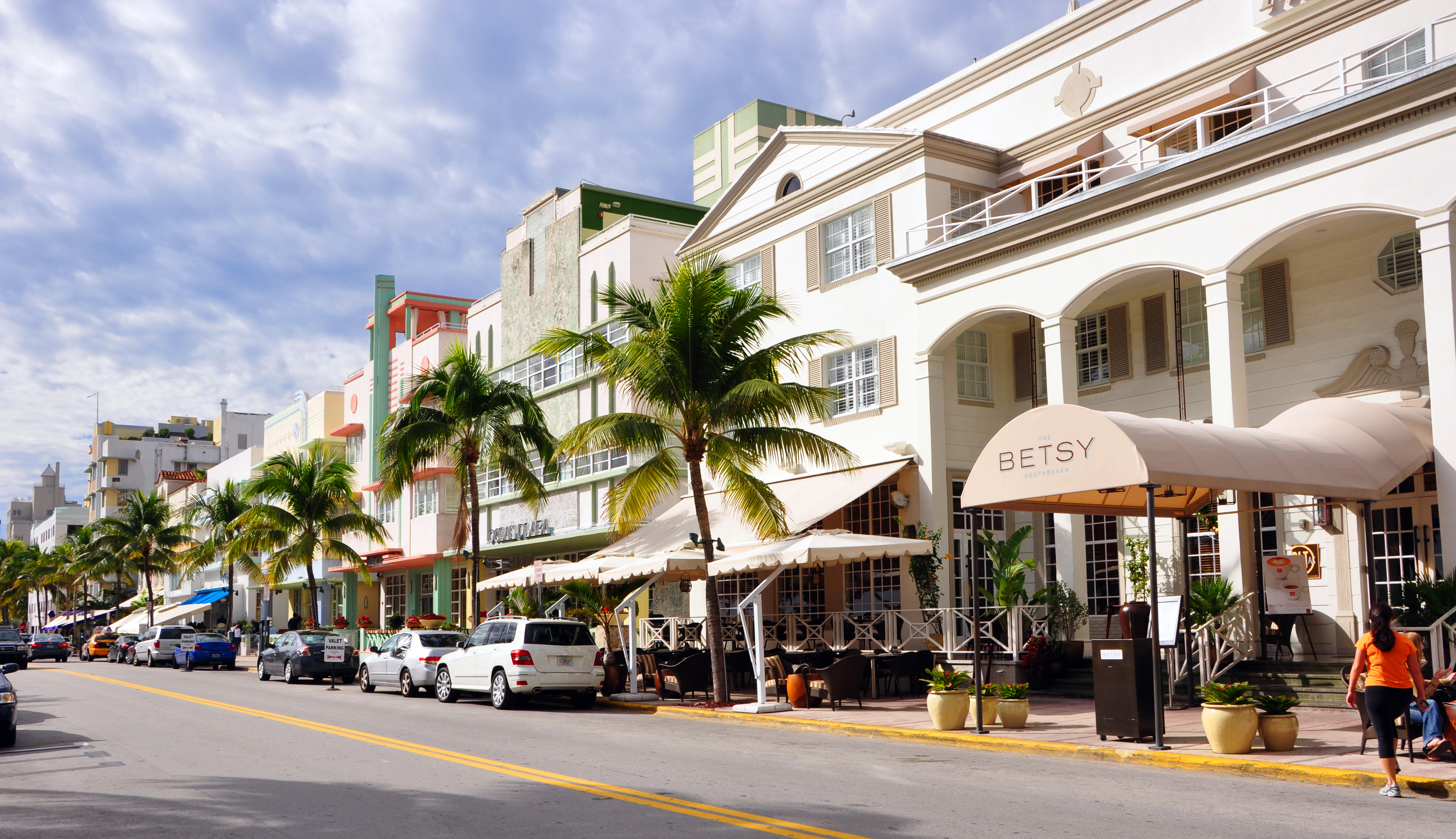
MIAMI (AP) – As Miami’s arts season gears up with an overflowing slate of museum exhibits, ballet premieres, and more culture than any individual could ever absorb, it’s easy to take the city’s vibrant artistic life for granted.
But only one generation ago, Miami was widely derided as a cultural wasteland. The dynamic creative scene that has become such an integral part of Miami’s character was created in an extraordinary — and extraordinarily unlikely — burst of cultural energy in the 1980s.
That decade saw the launch of the National Young Arts Foundation, Miami City Ballet, New World Symphony, New World School of the Arts, Pérez Art Museum Miami, the Museum of Contemporary Art in North Miami, Miami Book Fair International and Miami International Film Festival. Tigertail Productions opened the way for the avant-garde, the Rhythm Foundation brought the world’s music, the International Hispanic Theater Festival showcased Latin American culture, and the South Florida Art Center lit up Lincoln Road with creative cachet.


This artistic flowering was all the more startling in that it came in the wake of a series of daunting crises: the “Cocaine Cowboy” era of violent drug cartel battles, the Mariel boatlift and the riots in Liberty City in 1980. The city of Miami had the country’s highest murder rate, and drug trafficking threatened to top tourism and real estate as its most profitable industry. In 1981, a Time magazine cover story famously asked whether the area was “Paradise Lost.”
“They were the worst things that can happen to a city,” says Seth Gordon, an arts consultant who worked for the Greater Miami Chamber of Commerce at the time. “Our self-confidence was in the pits.”
But instead of succumbing to urban disaster, a coalition of quixotic arts visionaries, civic leaders and business benefactors found a lifeline in the arts.
“We had a wonderful coming together of private sector and government deciding we’d reached the bottom and the arts are one way to pull ourselves back up,” says Mitchell Kaplan, a co-founder of the Book Fair. Its first edition, in 1984, astonished many by drawing 25,000 people to Miami Dade College’s Wolfson Campus in a then-desolate downtown.
While a sense of crisis may have propelled Miami’s political and business establishment to support the arts, they were led (and pushed, and cajoled) by a series of risk-takers with a new vision of the city. Where most saw a cultural void, Kaplan and the era’s other pioneers saw opportunity. They were enabled by — and part of — the city’s youthful character: its anything-goes, can-do attitude; its lack of traditions and institutions; and its constant stream of newcomers looking to invent or reinvent themselves.

“Miami was absolutely wide open,” says Mary Luft, the godmother of the avant-garde here. She launched Tigertail Productions in 1979 to present cutting-edge performance, dance and music, paving the way for the contemporary performing arts here. “It had that spirit of anything was possible.”
Michael Spring, director of Miami-Dade’s Department of Cultural Affairs, has been an architect of the cultural boom since he was hired in 1983. “All we had was a sense of energy and determination,” Spring says. “The shared vision was we could create a new cultural life out of whole cloth here.”

The emptiness of Miami’s cultural landscape at the start of the ’80s is hard to picture now. The Florida Grand Opera was the only professional local group, although the Friends of Chamber Music presented small ensembles, and Judy Drucker brought famous classical music artists to town. There were a handful of small, conventional museums. But for the most part, the arts in Miami in 1980 were amateur, occasional and exotic — a highfalutin oddity.
Miami’s politicians and businessmen were galvanized less by artistic vacancy, however, than by a sense of emergency. One central figure was Alvah Chapman, CEO of Knight-Ridder, then publisher of the Miami Herald. A military school graduate who treated Miami’s powerful like foot soldiers in his campaign to improve the city, Chapman believed the arts should be part of the city’s new identity.
“It was a major turnaround,” says Ruth Shack, an arts lover and county commissioner from 1978 to 1984 who persuaded her colleagues to devote 20 percent of the first tourist tax to the arts. “We were all so enmeshed in these horrors.”
Chapman’s support was key in persuading his business and government cohorts.
“There were people who had great power and influence for the arts, whether they liked them or saw them as important to a well-rounded community,” says Gordon. “They were not power driven, they were service driven.”
One of them was attorney Parker Thomson, the dogged leader of the 20-year campaign to build the Adrienne Arsht Center for the Performing Arts, officially launched in 1985. “One of the strongest issues for businesses coming to this community was education and culture,” Thomson says. “There is no major metro area in the United States that isn’t a cultural center.”

One central public project was a county-funded, $24 million cultural plaza in the heart of downtown, with the Center for Fine Arts, the main branch of the Miami-Dade Public Library, and the South Florida Historical Museum. The complex, designed by famed architect Philip Johnson, was mired in bureaucratic snags that delayed its 1983 opening by a year. Though initially popular, its size and isolation from the street would prove problematic.
Yet the CFA’s innovative first director, Jan van der Marck, launched a transformative project for Miami — environmental artists Christo and Jeanne-Claude’s Surrounded Islands, wrapping 11 islands in Biscayne Bay with huge swaths of pink fabric in 1983. Suddenly, the image of Miami going around the world was not mayhem in the streets, but a surreal string of giant floating flowers.
The most crucial single benefactor in the launch of the arts in the ’80s was Carnival Cruise Lines founder Ted Arison. Not only did he love music, he wanted to bring the arts to the city where he built his successful company. In 1981 Arison gave $5 million, an unprecedented sum, to launch the National Foundation for Advancement in the Arts (now called YoungArts). His generosity galvanized arts philanthropy in Miami.
“No one had ever given that amount of money to the arts in Miami,” says Bill Banchs, an executive at NFAA from 1986 to 2008, the last 17 years as president. “Ted had no ulterior motive for doing this other than a firm belief in how important the arts are to having a fulfilling life, and to having a prosperous and complete community.”
In 1987 Arison and his wife and philanthropic partner, Lin Arison, created the New World Symphony, buying and renovating an old movie theater on Lincoln Road. For years, Carnival debuted new cruise ships with galas for the NFAA. Lin Arison threw fundraising dinners at their home. Their passion inspired others in their circle, including Toby Ansin, who would found Miami City Ballet in 1985.
“We got a lot of people enthusiastic, and they became supporters,” Lin Arison told the Herald in 2011. “It’s contagious. People are doing stuff, then it inspires other people to do other things.”
Over on a decaying and crime-ridden South Beach, potter Ellie Schneiderman persuaded city officials to fund the South Florida Center for the Arts, bringing artists to storefront studios and a cooperative gallery in late 1983 on an empty Lincoln Road, where desperate landlords gave her dirt-cheap rent. The artists brought a sense of excitement and creativity to South Beach that was key to the area’s rebirth.
James Quinlan and Paco de Onis started the Rhythm Foundation with world music concerts at the rundown Cameo Theater on Washington Avenue in 1987. Quinlan remembers artists, commissioners and entrepreneurs gathering for happy hour at the Cardozo Hotel and the Strand restaurant, the area’s pioneering hot spot.

“It was a really small town but really exciting,” Quinlan says. “The government was very pro-revitalization, and they got it that culture was part of that. They went out of their way to see things work.”
Nat Chediak, after a decade of showing foreign and independent films at his two small Coral Gables theaters, the Arcadia and the Cinematheque, launched the Miami International Film Festival to a packed Gusman Center for the Performing Arts in February 1984. As with the Book Fair, the festival’s success startled skeptics. But not Chediak, who got a standing ovation on closing night.
“I was meeting people who wanted the festival on a day-to-day basis,” he says. “It was ripe.”
MDC Wolfson vice-president Eduardo Padrón threw his institution’s considerable weight behind multiple ventures beyond the Book Fair. He brought Luft in to produce the New Music America Festival, a 10-day, citywide series of experimental music in 1988. MDC was one of the three institutions behind the 1987 launch of New World School of the Arts, an incubator for generations of local talent. Wolfson Campus was home to galleries (hosting the earliest exhibits of Mitchell Wolfson’s Wolfsonian collection) and a performing arts series.
A Cuban immigrant who came to Miami in 1961, Padrón, like Arison, was driven by gratitude to his city and a desire to make it better.
“We were bringing life to a place that was desperate for it,” says Padrón, who is now president of MDC. “We created the infrastructure that allowed other people to believe they could make something happen that was unique to the U.S. and very Miami. One thing started adding to another and another. You always need someone to lead, but the fact is it takes a village of people who believe in what you’re doing, and it becomes a movement.”
Another aspect of Miami’s cultural boom was the new space it provided for immigrant voices, and for people from different cultures to mix. The Film Festival and Book Fair showcased Latin American films and authors. The Rhythm Foundation presented African and Caribbean bands. Olga Garay, a program officer at the Cultural Affairs Department in the ’80s, led efforts to fund more culturally diverse groups and was key to the launch of the International Hispanic Theater Festival in 1985.
Part of what set Miami culture apart was how much it was driven by immigrants and non-Western culture, says Garay.

“The typical cultural turnaround models in the U.S. have been very white dominated,” says Garay, who took over the live arts program at MDC Wolfson at the end of the 80’s, presenting Afro-Cuban jazz master Mario Bauza and an annual African dance festival. “They didn’t have that global flavor that permeated in Miami.”
All the efforts started in the ’80s continue in a vastly larger artistic environment. Some — such as the Film Festival, which is now part of MDC’s broad slate of cultural programs, or PAMM, the museum descended from the CFA — are larger and more institutionalized. The pioneers have spawned all kinds of vital offshoots, from the multimedia collective Filmgate Interactive to the O Miami Poetry Festival. From experimental galleries to popular festivals, culture is thriving in Miami to a degree that only a few early dreamers imagined.
But there are also signs of stress. The South Florida Center for the Arts, which propelled the revitalization of Lincoln Road, sold its main building to a developer last spring. Accelerating gentrification means that artists have an increasingly hard time finding affordable places to work. A number of groups have been felled by shrinking public funding and the difficulty of appealing to a limited pool of donors. Meanwhile, a new generation of corporate and private benefactors are often focused on publicity for their business, or on personal projects like a proliferating number of private museums. The attitude that it is important to support the arts as a public good has increasingly given way to a belief that they should be self-sufficient or look to private largesse.
“These things are not givens,” Kaplan says. “They are something to be treasured. Culture can be a very tenuous thing.”
And yet, many believe that in the city that used culture to pull itself back from the brink, people will keep finding ways for the arts to move forward.
The upscale Art Basel Miami, an annual (December) show that launched in 2002, has had a profound impact on Miami’s fine-art scene. Something of a winter reunion for the international art world, it provides space for participating galleries, exhibitions and parallel programming produced in collaboration with the host city’s local institutions. During Art Basel’s run, regional airports overflow with private jets carrying deep-pocketed art collectors from Central and South America.

Miami’s leading private collections – among them the Rubell Family Collection, Cisneros Fontanals Art Foundation, the De la Cruz Collection Contemporary Art Space, World Class Boxing, the Margulies Collection and the Dacra Collection – open their homes and warehouses to guests of Art Basel. So do the region’s many world-class museums, such as the Perez Art Museum, Bass Museum of Art, Norton Museum, Wolfsonian-FIU and MOCA North Miami. Since 2003, the Fairchild Tropical Botanic Garden in Coral Gables has set the opening of its annual outdoor art exhibition to coincide with the fair.
“There are two things you can count on in Miami,” says Ruth Shack, the former county commissioner. “One is change. The other is resilience. Tomorrow, Miami will be different from what it was yesterday. We will make the best of it.”
___
By JORDAN LEVIN
Miami Herald
Information from: The Miami Herald, http://www.herald.com
Copyright 2015 Associated Press. All rights reserved. This information may not be published, broadcast, rewritten, or redistributed.



